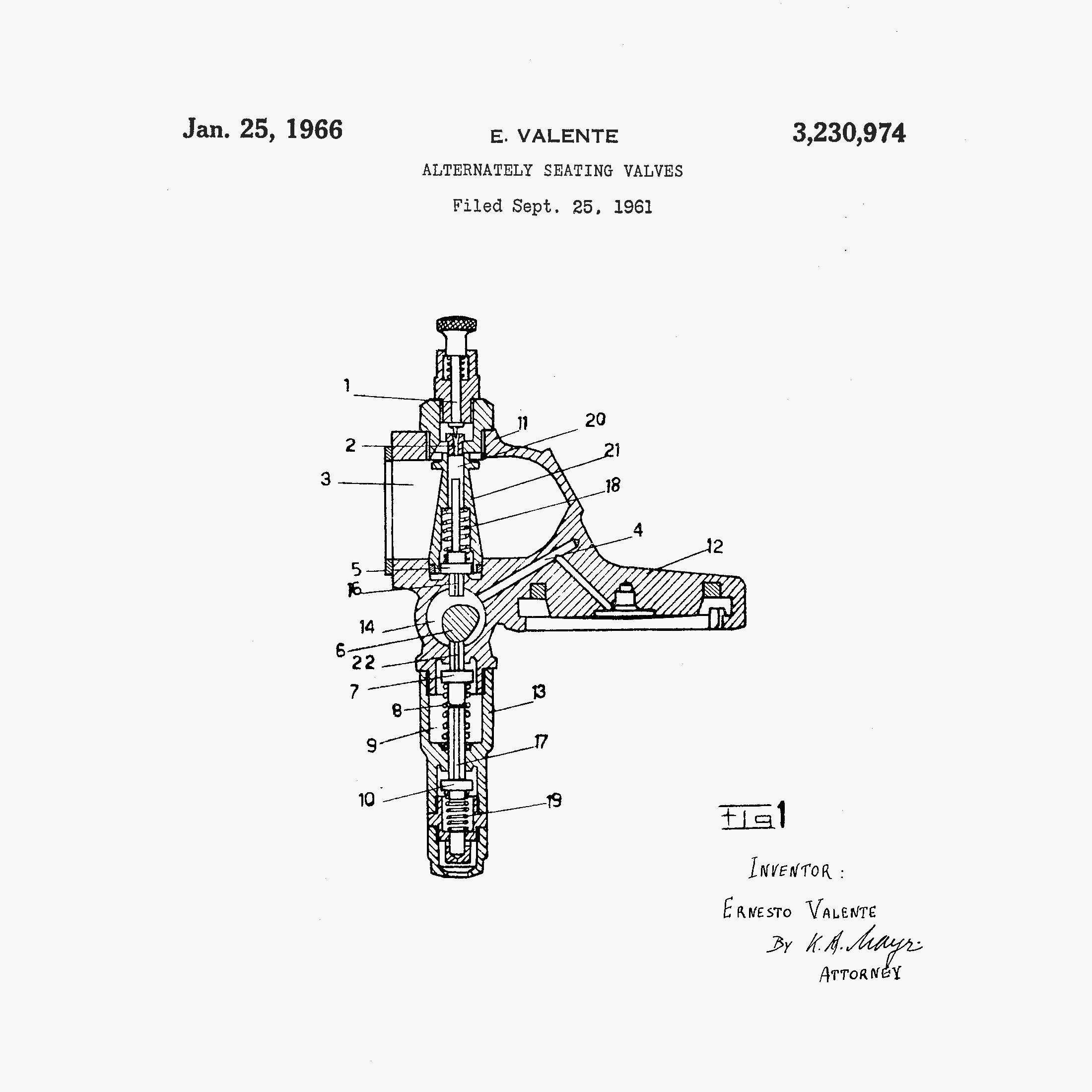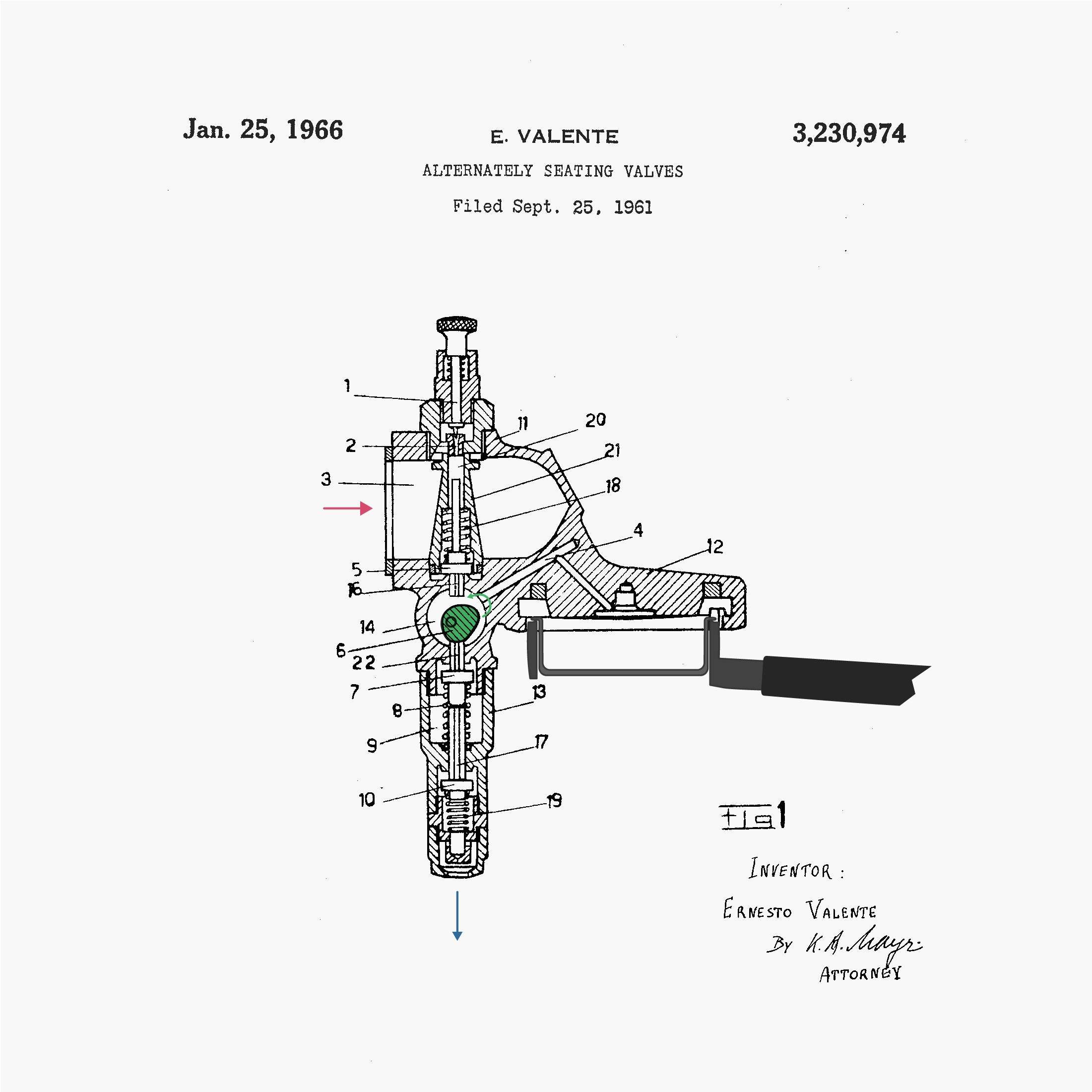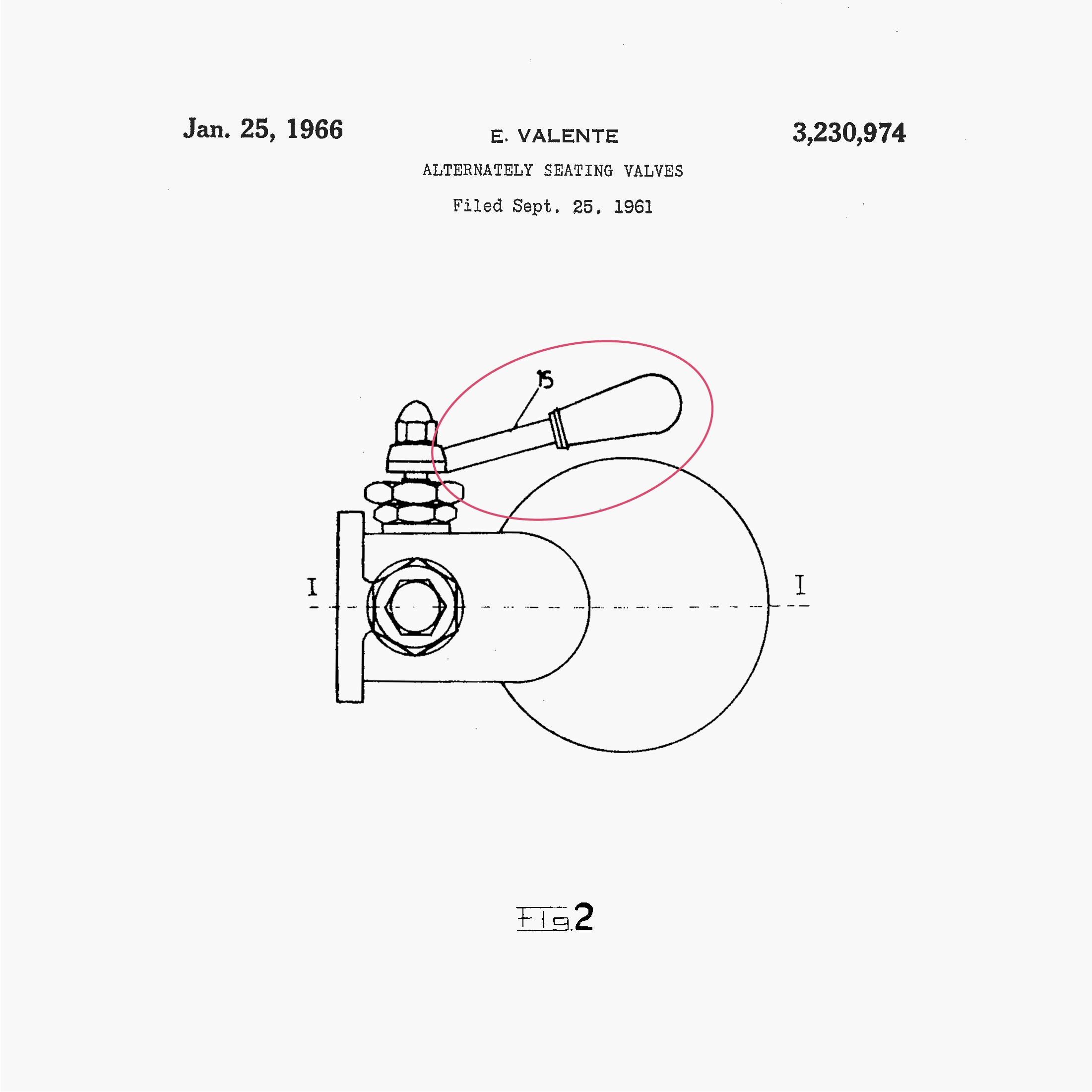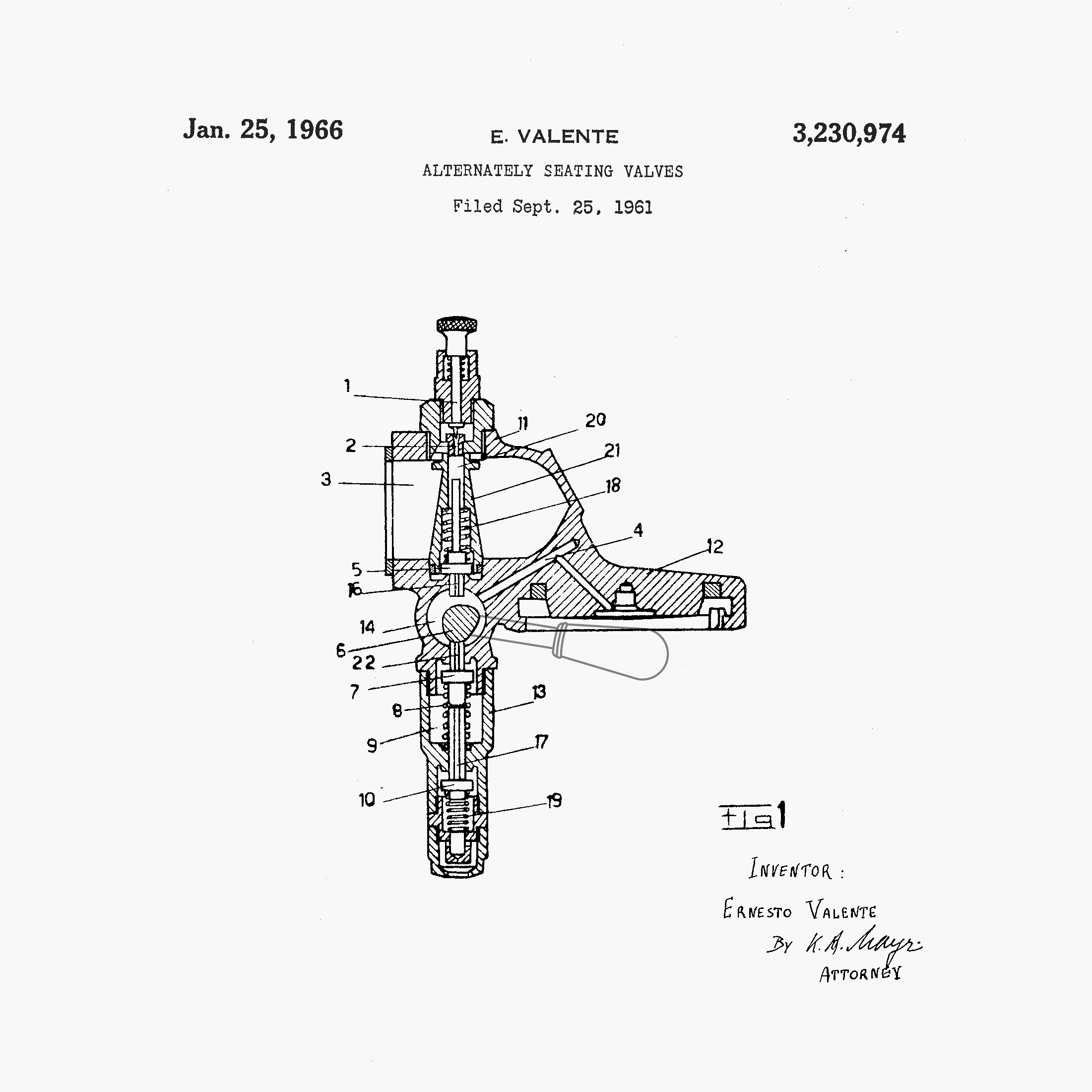In this animation, we show you exactly how Ernesto Valente’s E61 Grouphead from 1961 operated.
The TRR machine was an important advancement towards more stable machine technology. One of its key features was the way it used the flow of hot water to keep the group head hot. The E61’s group head has remained an industry standard. It was an important step towards the development of the saturated group head, which we explore in detail in the following lesson.
The E61 Group Patent
FAEMA’s E61 espresso machine represented a huge leap forward for espresso-making. It was the first machine to incorporate an electric pump, to use a thermosyphon for temperature stability, and to enable automatic pre-infusion. In this video, we explain how the E61’s group head worked.
When the E61 was released, machines with three-way valves already existed on the market. The big innovation of Ernesto Valente’s group head was the automatic pre-infusion, which — as he describes in his patent — was one of the major advantages of the lever-type machines.
In this diagram, the group is in the off position. The group is connected to incoming hot water on the left, has a slot for a portafilter on the right, and has an exhaust on the bottom to release the pressurised water. Brewing is controlled by the cam, an oval piece of metal that rotates in its chamber to press on the valves on either side.
The cam is attached to a lever at the side which is used to control brewing. When the lever is in the down position, the group is switched off.
Hot water enters from the left, fills the main chamber inside the group (1), and then passes through a flow restrictor at the top into the central chamber (2). The water is prevented from flowing any farther by a seal, which is held in place by a spring.



